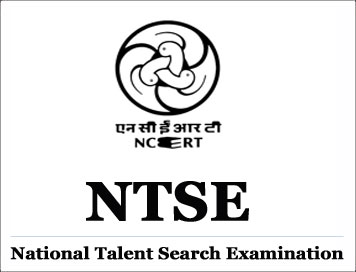"NTSE Sample Questions : 2015 Scholastic Aptitude Test (SAT) "
Disclaimer: This website is NOT associated with CBSE, for official website of CBSE visit - www.cbse.gov.in

"NTSE Sample Questions : 2015 Scholastic Aptitude Test (SAT)"
1. A segment of DNA contains 1200 nucleotides, of which 200 have adenine base. How many cytosine bases are present in this segment of DNA?
(1) 100 (2) 200 (3) 400 (4) 800
Ans. (3)
Sol. In DNA adenine forms double hydrogen bond with thymine and cytosine form triple hydrogen bond with guanine. So, if adenine are 200 in number, thymine will be 200 also and hence cytosine and guanine will be 400 each out of 1200.
(1) 100 (2) 200 (3) 400 (4) 800
Ans. (3)
Sol. In DNA adenine forms double hydrogen bond with thymine and cytosine form triple hydrogen bond with guanine. So, if adenine are 200 in number, thymine will be 200 also and hence cytosine and guanine will be 400 each out of 1200.
2. You are observing a non-chlorophyllous, eukaryotic organism with chitinous cell wall under a microscope. You shall describe the organism as a
(1) fungus (2) alga (3) protozoas (4) bacterium
Ans. (1)
Sol. Fungus have eukaryotic cells with chitinous cell wall. It shows heterotrophic mode of nutrition because of abscence of chlorophyll.
3. Match the items given in column A and Column B, and identify the correct alternative listed below.
Column–A Column–B
(a) Flying fish (i) Draco
(b) Flying lizard (ii) Echidna
(c) Egg laying mammals (iii) Exocoetus
(d) Flightless bird (iv) Struthio
(1) (a)–(i), (b)–(iii), (c)–(ii), (d)–(iv)
(2) (a)–(iii), (b)–(i), (c)–(ii), (d)–(iv)
(3) (a)–(iii), (b)–(i), (c)–(iv), (d)–(ii)
(3) (a)–(iii), (b)–(i), (c)–(iv), (d)–(ii)
(4) (a)–(i), (b)–(iii), (c)–(iv), (d)–(ii)
Ans. (2)
Sol. Flying fish – Exocoetus
Flying lizard – Draco
Egg laying mammal – Echidna
Flightless bird – Struthio
Ans. (2)
Sol. Flying fish – Exocoetus
Flying lizard – Draco
Egg laying mammal – Echidna
Flightless bird – Struthio
4. Which one of the following statements about cell organelles and their function is correct?
(1) Mitochondria are associated with anaerobic respiration.
(2) Smooth endoplasmic reticulum is involved in protein synthesis.
(3) Lysosomes are important in membrane biogenesis.
(4) Golgi bodies are involved in packaging and dispatching of materials.
Ans. (4)
Sol. Golgi body is involved in packaging and dispatching of materials.
5. A leguminous plant grown in an autoclaved, sterilized soil fails to produce root nodules because–
(1) autoclaved soil is not good for root growth.
(2) autoclaved soil is devoid of bacteria.
(3) autoclaving reduces N2 content of soil.
(3) autoclaving reduces N2 content of soil.
(4) plants cannot form root hairs in such a soil.
Ans. (2)
Sol. When soil is autoclaved and sterlized, it leads to death of microorganisms (rhizobium bacteria). When legumnous plant is grown in this soil it fail to produce nodules due to abscence of rhizobium bacteria.
Ans. (2)
Sol. When soil is autoclaved and sterlized, it leads to death of microorganisms (rhizobium bacteria). When legumnous plant is grown in this soil it fail to produce nodules due to abscence of rhizobium bacteria.
6. The causative agent of the disease ‘sleeping sickness’ in human beings is an
(1) intracellular parasite found in RBC
(2) extracellular parasite found in blood plasma.
(3) intracellular parasite found in WBC.
(3) intracellular parasite found in WBC.
(4) extracellular parasite found on the surface of platelets
Ans. (2)
Sol. Causative agent of the disease “sleeping sickness” in human being is a protozoan, Trypanosoma specie which is an extracellular parasite found in blood plasma.
Ans. (2)
Sol. Causative agent of the disease “sleeping sickness” in human being is a protozoan, Trypanosoma specie which is an extracellular parasite found in blood plasma.
Courtesy: NTSE